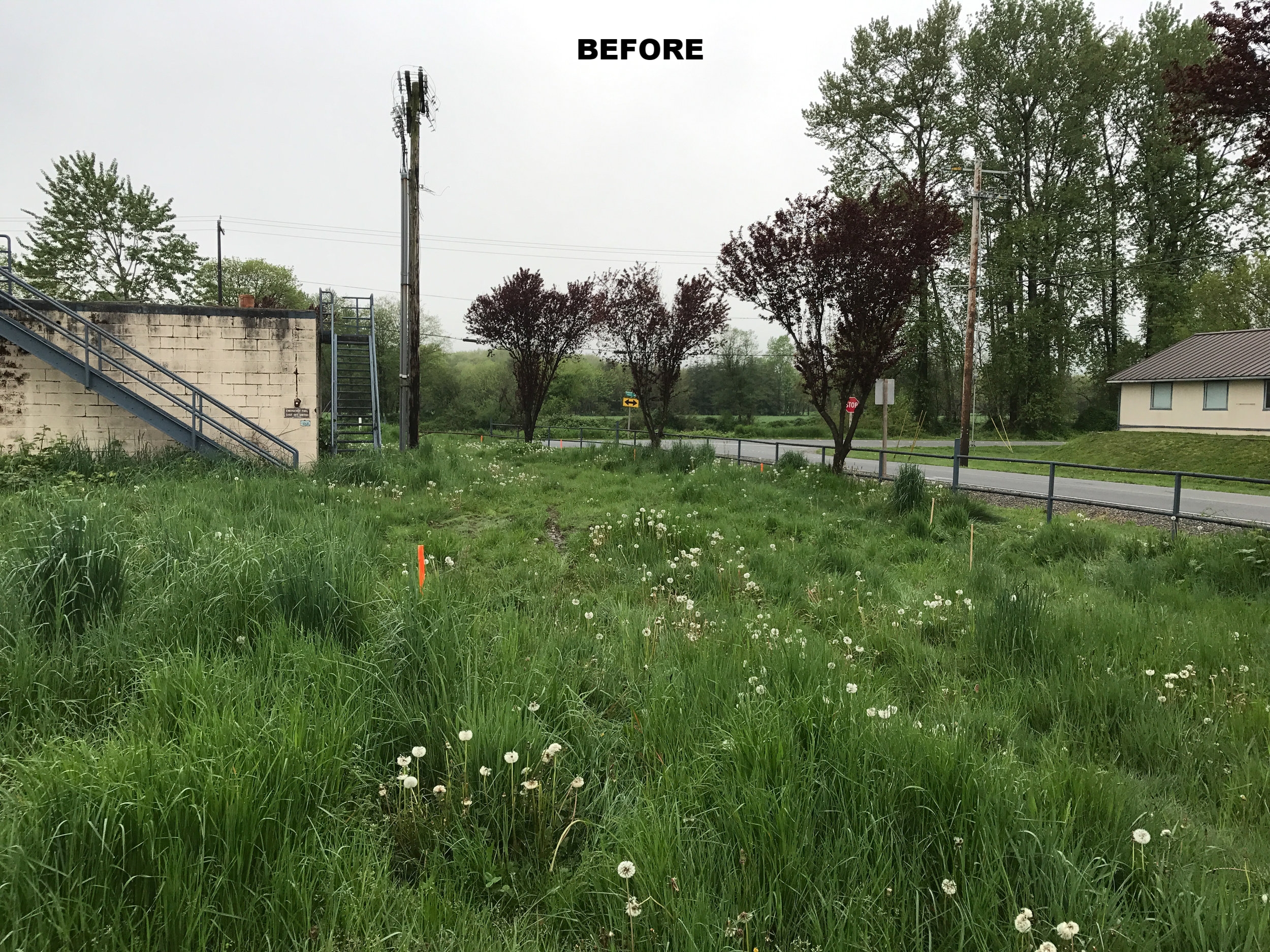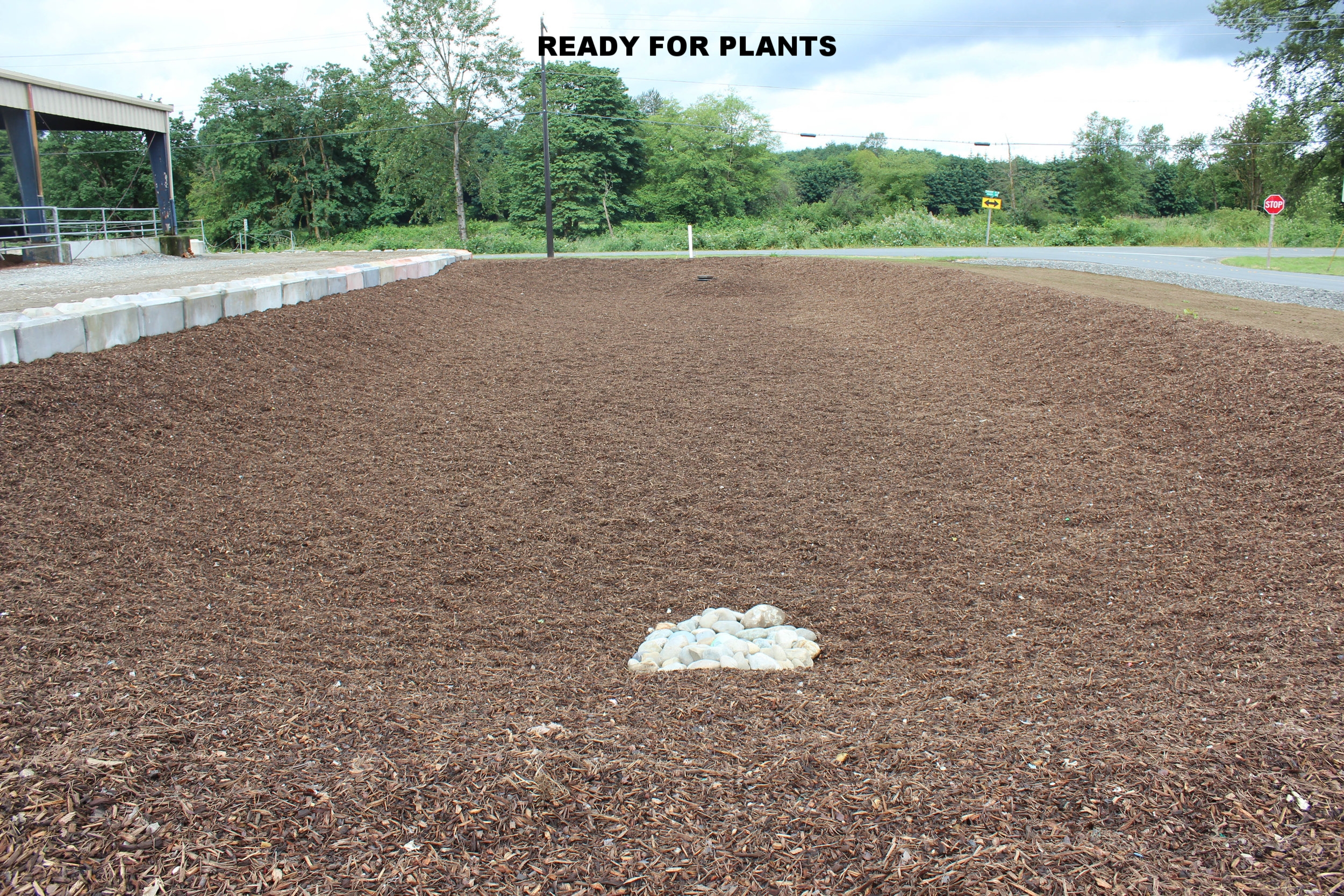The Biggest Rain Garden We’ve Ever Built!
/Recently, we completed a rain garden project at the Qualco Energy site in Monroe. It is by far the largest rain garden project we have ever done. Planning for this rain garden began in earnest in August 2016 by one our farm planners, Brett de Vries, and the ground is now ready for planting in the fall. Brett shared that “The site has historically had issues with stormwater due to the abundance of Pacific Northwest rain. This is a great multi-benefit project. It helps Qualco remain at the cutting edge of lessening their environmental impacts and reduces their runoff to neighboring waterways. It helps provides clean water for fish, shellfish and other aquatic life.”
Qualco Energy is a non-profit cooperative based in Monroe, Washington that built a community digester to create renewable energy. The location is at the confluence of the Skykomish and Snoqualmie Rivers, which has traditionally been a fishing area for Tulalip Tribes. In Lushootseed, the language of the Coastal Salish people, Qualco means “where two rivers come together.” Qualco is managed by a volunteer board of 6 supervisors from 3 organizations - Northwest Chinook Recovery, Tulalip Tribes and Sno/Sky Agricultural Alliance. The Werkhoven Dairy manages and operates the on-site digester and provides it with the main feedstock, which is manure. The digester also processes animal waste, trap grease, pulp, whey, expired beer, and even unusable Starbucks beverages! These feedstocks are then digested, which produces methane gas that produces electricity for Snohomish County P.U.D. The energy generated provides power to 300 homes. It also keeps the above mentioned products out of landfills, drains and illegal dumps.
The remaining products after digestion are nutrient-rich liquids and compostable solids that are used to grow crops, which then feed the Werkhoven Dairy herd, closing the loop. Now, they will also be using polluted stormwater from their barns to grow a garden.
Qualco Rain Garden:
- The rain garden is 37 feet wide by 116 feet long.
- The excavation size was 60 feet by 140 feet long.
- The rain garden capacity is 120,000 gallons.
- The treatment capacity of 5,500 gallons per hour.
- The overflow drain is 100 feet away from the entry point allowing it to filter waste for a greater distance.
A rain garden is a depression created in the landscape to allow rainwater from a roof, road, or driveway run off to slowly soak into the ground instead of flowing into the nearest stream or Puget Sound. Native soils are removed and replaced with a special blend of high organic soil, bioretention and mulch. Rain gardens are then planted with beautiful, hardy, low-maintenance native perennial plants, which can withstand drought and wet root conditions.
Whether you live on a farm or urban site, rain gardens could be the solution for you!




